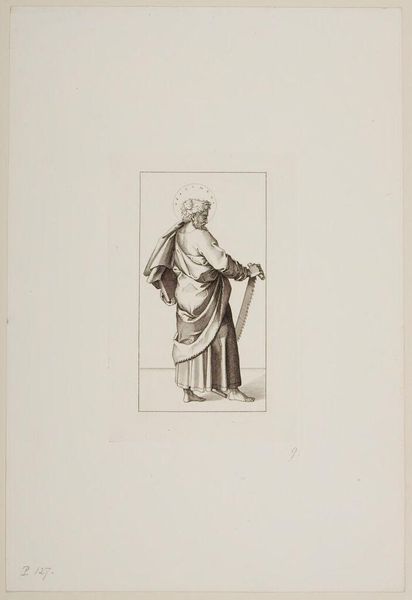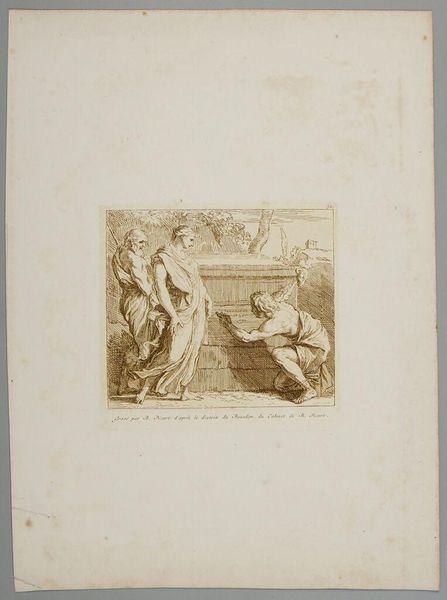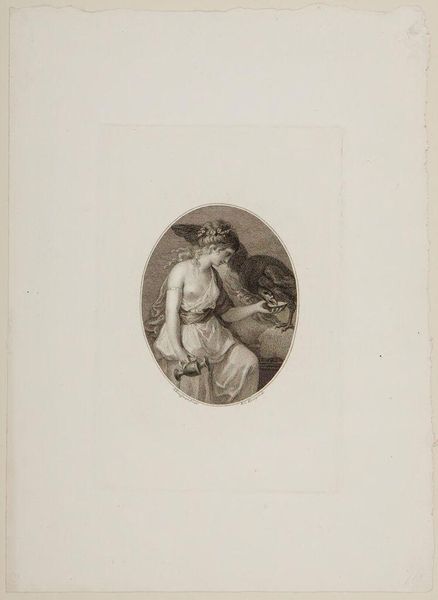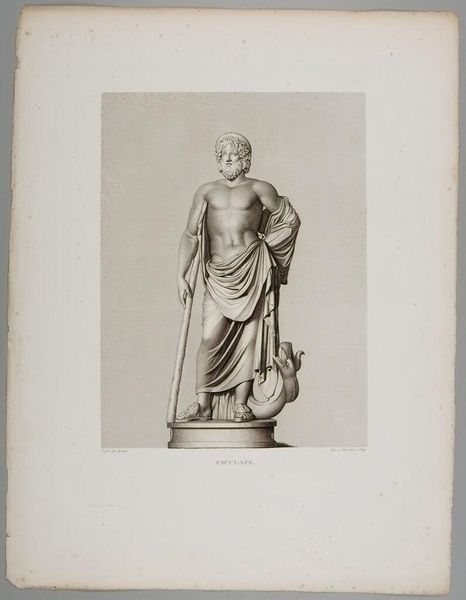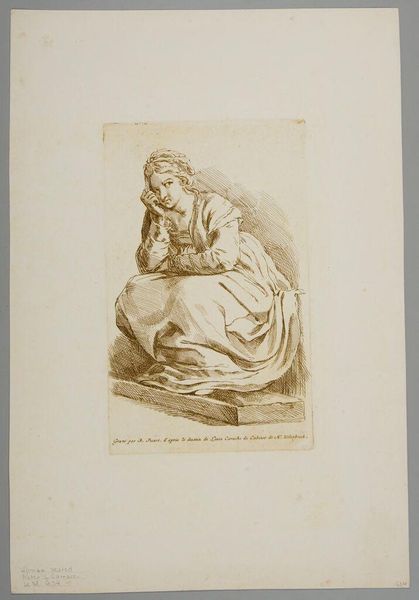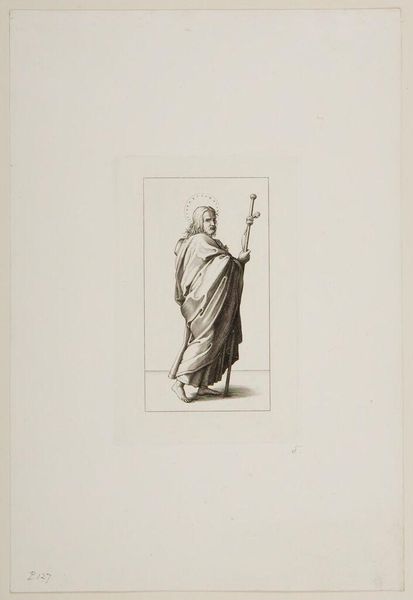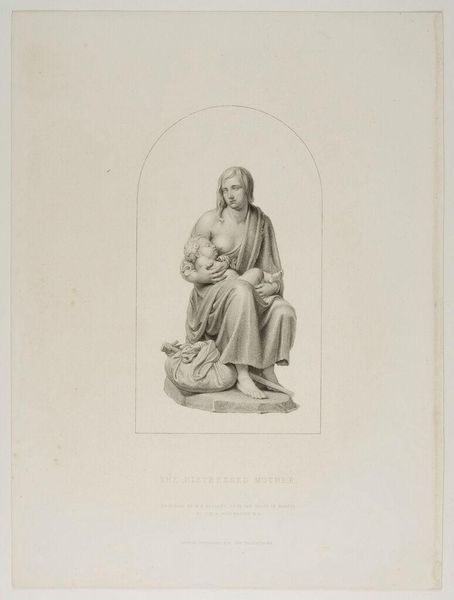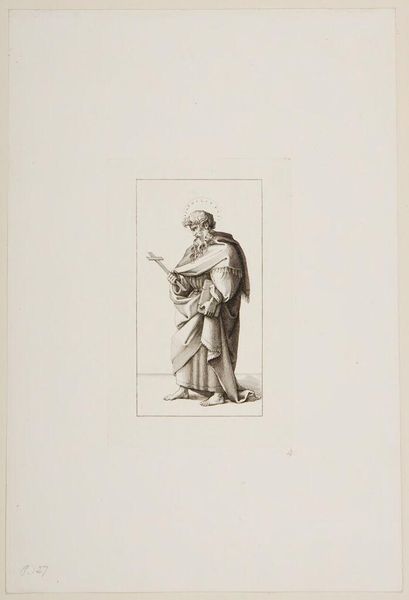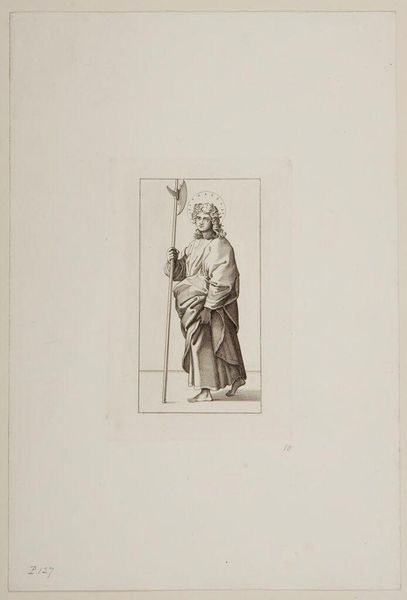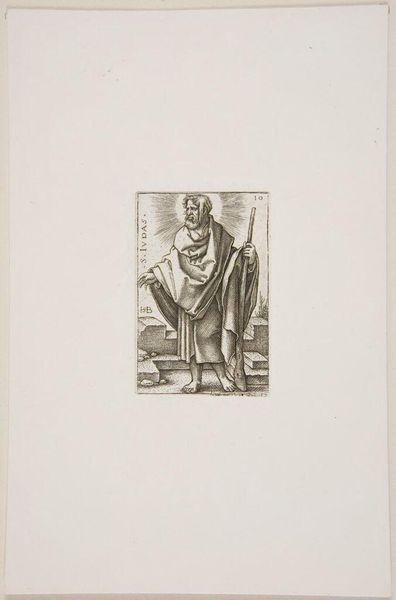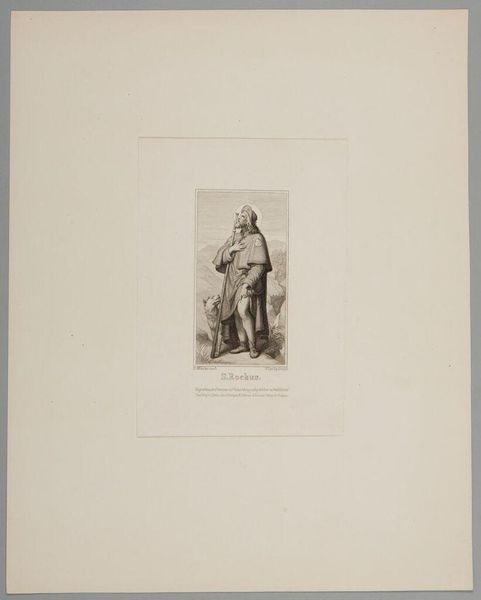
Copyright: CC0 1.0
Curator: This image, simply titled "Painting," was created by Christian Ernst Stölzel, who lived from 1792 to 1837. Editor: There's a certain neoclassical severity to it, but also a calmness. The figure is enthroned, almost like a serene queen, but she holds the tools of art, not power. Curator: Precisely! She embodies the muse of painting. Note the laurel wreath, a classical symbol of achievement and inspiration. It suggests painting's place within a lineage of artistic excellence. Editor: I'm curious about the context. How was an image like this used? Was it meant for public display or private contemplation? The lack of strong color strikes me as significant. Curator: Considering the era, it could have served as an allegorical print. The image would have circulated through academies and studios, reinforcing painting as a noble pursuit within a specific cultural framework. Editor: It's interesting how the artist balances authority with artistic creativity. The throne implies status, yet the details suggest a commitment to artistic expression. A subtle statement, I think. Curator: Indeed. The symbolic weight of the imagery contributes to its enduring presence. Editor: I agree. It's made me think about the changing roles of the artist in society and how their legacy has evolved.
Comments
No comments
Be the first to comment and join the conversation on the ultimate creative platform.
